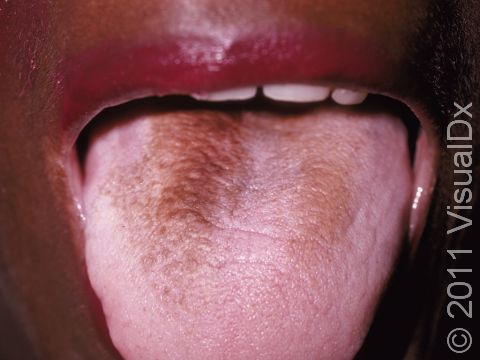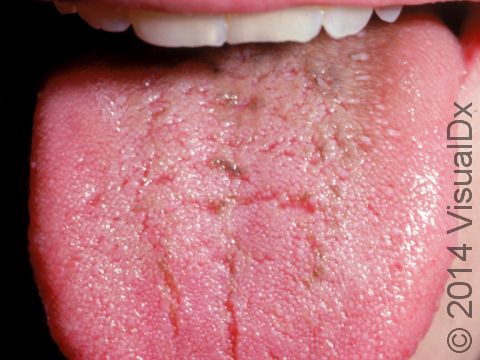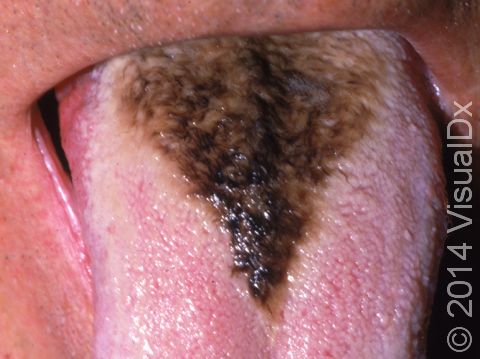Hairy Tongue
Hairy tongue, also known as black tongue, is a benign condition of elongation and staining of the fingerlike projections (papillae) on the tongue surface. This condition may be caused by overgrowth of a bacteria or yeast that produces a colored substance (pigment). Anything that reduces the flow of saliva in the mouth, such as dehydration or illness, or if the person is not eating a normal diet, can lead to the condition, which typically develops over a few weeks. Medications that commonly cause hairy tongue include antibiotics, anti-psychotics, anti-depressants, and anti-cholinergic agents. Other causes include smoking, alcohol, the use of mouthwashes, and exposure to radiation therapy.
Who's At Risk?
Hairy tongue can occur at any age, but it is most common in people who are dehydrated, ill, or not eating a normal diet. People taking certain medications or with certain exposures may also be more susceptible.
Signs & Symptoms
Hairy tongue most commonly affects the front two thirds of the tongue surface (not underneath the tongue). The tongue may be yellow, orange, green, brown, or black, with a coated, rough, or “hairy” look. You may notice a stale taste or smell in the mouth and a more sensitive gag reflex, but it is painless.
Self-Care Guidelines
- Gently brush the tongue with a toothbrush twice daily. Then rinse the mouth with a dilute solution of hydrogen peroxide (1 part peroxide to 5 parts water), or apply the solution with a toothbrush. Rinse the mouth with plain water.
- Maintain good oral hygiene with regular tooth brushing.
- Minimize mouthwash use and avoid smoking or chewing tobacco.
- Eat more foods with fiber (fruits and vegetables); sucking on pieces of fresh pineapple may also be helpful.
Treatments
A scraping or biopsy might be recommended. Sometimes an antibiotic or antifungal medication will be prescribed.
Visit Urgency
If self-care measures are unsuccessful, seek medical advice.
Trusted Links
References
Bolognia, Jean L., ed. Dermatology, pp.1080-1081. New York: Mosby, 2003.
Freedberg, Irwin M., ed. Fitzpatrick’s Dermatology in General Medicine. 6th ed, pp.1079-1080. New York: McGraw-Hill, 2003.
Last modified on October 5th, 2022 at 7:29 pm

Not sure what to look for?
Try our new Rash and Skin Condition Finder


